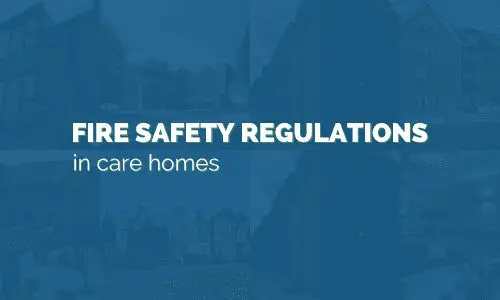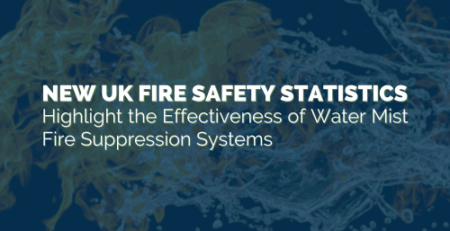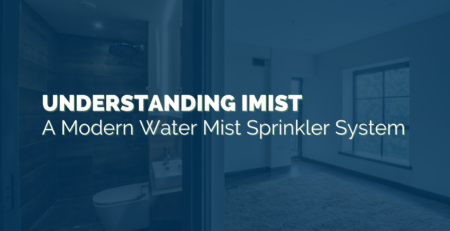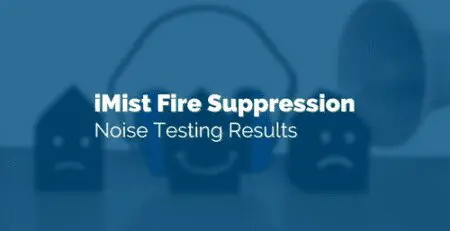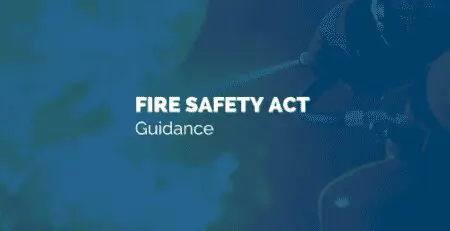Fire Safety Regulations in care homes
Who decides the Fire Safety Regulations in care homes?
In the UK, fire safety regulations for care homes are primarily governed by the Regulatory Reform (Fire Safety) Order 2005, more commonly known as the Fire Safety Order. This legislation applies to all non-domestic premises, including care homes, and sets out the legal requirements for fire safety. It places the responsibility for fire safety on the “responsible person”, who is typically the owner, operator, or manager of the care home.
The responsible person has a legal duty to carry out a fire risk assessment of their premises and take appropriate measures to minimise the risk of fire and ensure the safety of residents, staff, and visitors. This includes implementing fire suppression systems where necessary. The specific requirements for fire suppression systems may vary depending on factors such as the care home’s layout, size, and occupancy.
These Regulations state that a registered person must:
- Consult with a fire authority for advice.
- Take adequate precautions against fire risk.
- Plan for the detection, containment, and extinguishment of fires through the provision of recommended fire safety equipment.
- Ensure the regular maintenance of fire safety equipment.
- Be responsible for the training of care home staff, and the appointment of competent fire wardens for the premises.
- Organise regular fire drills to practice evacuation procedures; all drills must be recorded, as should any equipment testing.
The importance of fire safety…
When a fire starts in a building, it can spread extremely quickly, and even quicker if the correct protocols aren’t followed properly. As well as this, if the building is old there is a good chance that the materials it is made of will be more flammable, increasing the chance of the spread. The chance of fire spread is also increased if the building is not correctly compartmentalized as the fire can spread very quickly through roof voids.
In a worst-case scenario, fires can lead to loss of life, severe health complications, and damage to your property and belongings; all of which can have a minimised risk, with the correct fire safety and prevention measures in place. These measures will keep your staff and residents as safe as possible and put their minds at ease by knowing that you have a plan and precautions in place in case of a fire.
Fire safety in care homes is especially important, as they are likely to be home to people who are hard of hearing, visually impaired, unable to walk, and may suffer from debilitating or disorienting illnesses. The situation becomes more dangerous at night when residents are resting and there may be reduced members of staff in the building.
Failure to follow your obligations as the responsible person could result in a custodial sentence and a large fine.
General guidelines and fire safety regulations in care homes:
- Fire Risk Assessment
Every care home in the UK is required to have a detailed and up-to-date fire risk assessment. These must be conducted to evaluate and mitigate the risks with the appropriate measures. Fire risk assessments do not always require an expert, but we would advise you to always seek professional assistance to ensure that every fire risk has been spotted, identified, and accounted for when it comes to planning. The government website has advice on fire safety risk assessments in residential care homes.
As a general rule, you should:
- Identify potential fire hazards.
- Determine residents who are the highest risk.
- Decide which precautions are necessary.
- Record the results of your risk assessment.
- Review and update your fire safety protocols in line with your risk assessments.
- Fire Detection and Warning Systems
Care homes should install suitable fire detection and fire suppression systems, which will alert residents and staff to the potential fire via flashing lights and/or loud noises. They should then create a chart which is divided into zones by each alarm connected to the fire panel, as this will allow staff and firefighters to identify which alarm has been activated in a fire so that they can react accordingly. The 2006 government guidance recommends that each of these zones or compartments should be capable of evacuation in two and a half minutes.
If the care home has residents with audio or visual impairments, special alarms can be installed to suit their needs, and personal emergency evacuation plans (PEEPs) should be in place for those who require them.
Suitable fire detection systems and alarms may include heat detectors, smoke detectors, manual call points, and audible alarms. Please ensure that you are regularly testing your alarms and maintaining them to ensure they are working properly in the event of a fire.
- Fire Suppression Systems
Care homes are often home to elderly and vulnerable residents, who require additional assistance, and the ‘stay put’ procedures in place in many care homes increase the need for critical fire protection in these types of properties.
Our iMist system can be connected to the fire alarm panel, automatic opening vent (AOV) equipment and auto-dial systems, which ensures even greater safety for occupants. We have completed installations in many care homes, including Melbourn Springs in Cambridge, sheltered housing at Denmead Care Home, and assisted living properties, including Rogallo Place.
Depending on the outcome of the fire risk assessment, care homes may be required to install an automatic fire suppression system (AFSS) in appropriate locations. While they aren’t mandatory in every UK care home, they are highly recommended for enhancing fire safety. The decision to install could be dependent on factors such as the size, layout and specific risk factors associated with the care home. Local authorities or insurance companies may be able to guide you on this matter.
A high-pressure water mist system can have increased benefits over a traditional sprinkler system in care homes, as a mist system will only discharge less water, making it far more economical than traditional systems. Water mist systems reduce the amount of post-fire water damage and lessen the environmental impact, making them perfect for care homes.
The iMist system works to initially fill the area with micro-droplets and dampen all surfaces in the immediate area surrounding the fire, which prevents the fire from spreading. It then reduces the temperature, which prevents the re-ignition of the fire. Lastly, the mist deprives the seat of the fire of oxygen to prevent it from spreading.
A mist fire suppression system contains the fire in an area and reduces smoke production by tackling the fire at an early stage, and in doing so reducing the likelihood of smoke inhalation whilst also assisting residents to safely exit the room before the fire service arrives on the scene to extinguish the fire.
- Emergency Lighting & Escape Routes
Care homes must have clear and unobstructed emergency escape routes. These routes should be clearly and adequately signposted and illuminated, as well as clear of any obstacles. They should be well maintained, and evacuation plans should be put in place and rehearsed through evacuation drills to assist and guide staff and residents in the event of an emergency. Your evacuation plan should consider people with mobility challenges and special needs, and procedures should be in place, should an emergency arise.
- Evacuation Training
All care home staff are required to have fire safety training, by the CQC fundamental standard (safety). BS 9999:2008 Code of Practice for fire safety in the design management and use of buildings recommends that training is refreshed at least once a year.
All care home staff are required to have:
- Evacuation training.
- Nominated fire marshals – these must be known to everyone so that staff and residents know who to look out for, listen to and follow in the event of a fire.
- Training in fire prevention measures, emergency procedures, and the proper use of firefighting equipment.
Fire drills should be conducted periodically to ensure staff members are familiar with evacuation procedures and to identify any areas for improvement.
- Fire Safety Equipment and Maintenance
Care homes should have appropriate firefighting equipment in place. This can include (but is not limited to):
- Fire extinguishers
- Fire blankets
- Fire buckets
These should be regularly maintained, inspected, and tested to be kept in good working order.
It’s important to note that fire safety regulations can vary depending on the specific location, size, and type of care home. This is why it is important to consult the latest fire safety regulations and guidelines, as well as your local fire authority, fire safety consultants, and other relevant regulatory bodies to ensure compliance with current requirements and guidelines in place for care homes in your specific area.
Please get in touch with the team to discuss your care home fire suppression needs at sales@imist.co.uk, or get a free quotation for your property now.

